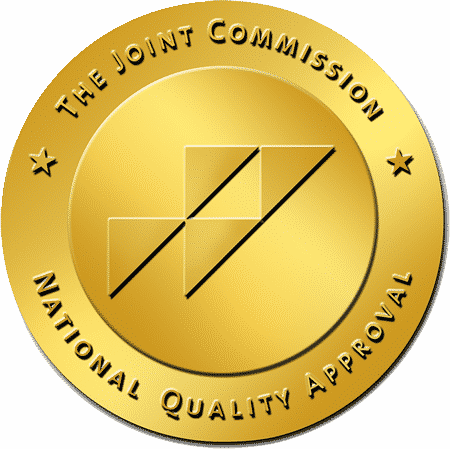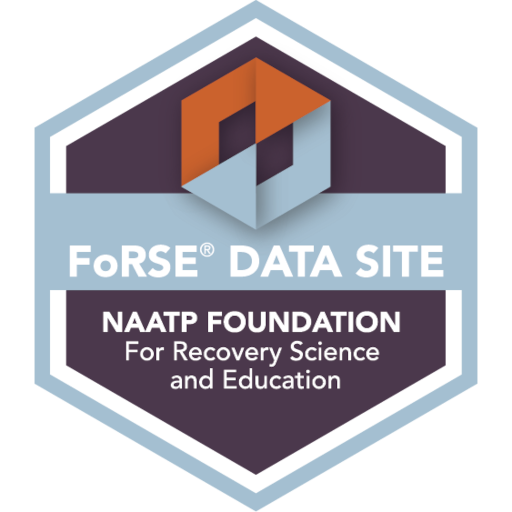Pregabalin is a prescription drug known by its commercial name: Lyrica or Lyrica CR. This prescription medication treats various conditions like anxiety disorders, neuropathic pain, nerve pain from spinal cord injury, seizure disorders and restless legs syndrome. However, because of its psychoactive potential, this drug is often misused.
This blog post aims to educate readers about the proper use and potentially addictive action of pregabalin. We’ll also provide essential information regarding the drug’s common and fatal side effects. This should also help patients suffering from Pregabalin addiction learn how and where to seek help.

What Is Pregabalin? What Are Its Uses?
Pregabalin is a particular medication for treating seizures and anxiety with pain-relieving properties. Because of its anticonvulsant and anxiolytic nature, pregabalin is used to treat conditions related to these symptoms. Pregabalin is meant to be taken orally as tablets, capsules, or oral solutions.
Pregabalin works by inhibiting the transmission of calcium in specific channels, leading to weaker synaptic releases of several neurotransmitters. This action reduces the excitability of the brain, making it an effective medication for psychoactive conditions. However, this drug could cause visual disturbances because of its potency.
Here are the uses of pregabalin:
Seizure Treatment
Pregabalin is an approved drug for the treatment of partial-onset seizures, which is a particular type of seizure where the person remains conscious but experiences physical twitching or jerking.
As part of its drug family, pregabalin shares similar side effects with other antiepileptic drugs. However, pregabalin is only used as a tandem medication with primary antiepileptic drugs.
When used alone, pregabalin yields poor results in treating partial-onset seizures. When it’s used with another antiepileptic drug, the combination treatment provides a significantly positive effect with more than a 50% reduction in seizure frequency. This impressive result is shown to manifest in as early as two days.
Neuropathic Pain
Neuropathic pain or neuralgia is described as a burning and shooting pain in the nerves caused by impaired nerve fibers. Damaged nerve fibers usually send incorrect signals to the brain, which causes a painful sensation. This is often caused by diabetes, but it can also result from chronic alcoholism, other central nervous system diseases, HIV, etc.
Pregabalin can be used to treat nerve pain because of its drug mechanism. Pregabalin inhibits calcium channels to reduce nerve-related pain signals, relieving the patient from neuropathic pain.
This primary action is also observed when the drug is used to treat epilepsy.
Generalized Anxiety Disorder
Generalized anxiety disorder (GAD) is described as an excessive and persistent worry about daily life events and activities. People with generalized anxiety disorder have difficulty controlling their fears, resulting in physical manifestations like muscle tension and increased heart rate. According to the National Library of Medicine, nearly 20% of adults are riddled with GAD.
Pregabalin has anxiolytic properties that help alleviate patients’ intense fear or worry from a generalized anxiety disorder. Structurally, pregabalin shares numerous similarities to gamma amino butyric acid (GABA), but they have distinct actions. Pregabalin binds to the alpha-2-delta subunit in a calcium channel, reducing the release of “excited” neurotransmitters.
Preoperative Anxiety Disorder
Unlike a generalized anxiety disorder, preoperative anxiety disorder develops only when there is an impending surgery. This disorder is described as an anomalous fear of going through the operating room and subduing to anesthesia, which could affect the patient’s recovery process. Patients lacking knowledge about the operation are often more prone to developing this anxiety disorder.
Typically, doctors don’t rely on sedatives or anxiolytics to treat pre-operative anxiety disorder, but pregabalin can be used for this purpose. As a pre-operative treatment, pregabalin promotes sedative effects, which decreases the patient’s fear while in the operating room. A particular study recommends around 75 to 300 mg of pregabalin before the operation to induce dose-related drowsiness.
Social Anxiety Disorder
Social anxiety disorder is another type of anxiety disease characterized by intense fear or dread of being judged and embarrassed in social settings. This may lead to a debilitating fear of public speaking, meeting new people, attending parties, etc. Patients suffering from a social anxiety disorder find it hard to make meaningful connections and seize opportunities.
Similar to the aforementioned conditions, pregabalin is a promising treatment for social anxiety disorder. In a particular study regarding this drug action, the researchers found that taking pregabalin at 600 mg daily is an effective anxiolytic drug for social anxiety. This action makes pregabalin a promising treatment for new or worsening depression.
Low Back Pain & Migraines
Many factors can cause persistent lower back pain, like a herniated disc, spinal stenosis, degenerative disc disease, etc. This can cause severe discomfort and affect the patient’s quality of life. On the other hand, a migraine is a separate condition characterized by a throbbing headache, usually accompanied by nausea and vomiting.
Both pain conditions interfere with a patient’s daily life and activities, but pregabalin can ease this painful experience.
According to the National Library of Medicine – pregabalin yields exceptional results for patients suffering from chronic lower back pain accompanied by neuropathic pain. Moreover, it also improves their overall health status and body function.
Effects of Pregabalin
As shown in the sections above, pregabalin offers more than just epilepsy or seizure relief. This, like other prescription medications, is known to possess anxiolytic and pain relief properties. Despite its vast medical applications, pregabalin includes some notorious side effects. In the sections below, we’ll talk about the different effects produced by this medication.
Therapeutic Effects
To reiterate and further delve into what was discussed earlier, pregabalin is known to produce the following therapeutic effects:
- Provide pain relief to diabetic patients and other patients suffering from chronic neuropathic pain
- Provide pain relief to patients suffering from fibromyalgia or chronic lower back pain
- Reduce symptoms of pre-operative anxiety disorder, generalized anxiety disorder, and social anxiety disorder
- Reduce seizures associated with epilepsy or other seizure-inducing conditions
- Deliver soporific effects to help patients attain peaceful sleep
Expected Side Effects
Side effects accompany almost every prescription drug. Because of this, it’s crucial to understand the non-fatal side effects of any medication you’ll be taking to ensure your safety. The following are the reported non-lethal side effects of pregabalin:
- Drowsiness
- Headaches or dizzy spells
- Weight gain
- Blurred vision or diplopia
- Vertigo
- Peripheral edema (swelling in the feet, ankles, and lower legs)
- Difficulty with concentration
- Nausea
These standard side effects often subside after a few days and are generally well-tolerated by most patients. If you experience any distressing effects, consult your doctor immediately.
Potentially Fatal Side Effects
Though the side effects listed above are common, pregabalin also includes potentially fatal side effects. If you notice any of these symptoms, it’s best to seek medical help as soon as possible:
- Hypersensitivity or severe allergic reactions
- Respiratory depression or slowed breathing
- Changes in your heart rate or rhythm
- Recurring suicidal thoughts or ideation
- Severe skin reactions like rashes, hives, and blisters
- Fever with flu-like symptoms
- Unexplained fluid retention all over the body
These side effects are rare and should not be taken lightly. When taking pregabalin, it’s vital to bear in mind the potential risks associated with this medication and be aware of any changes in your body.
Dosing and Usage of Pregabalin
Proper medication dosing is critical for the safe and effective use of pregabalin. Different situations require different dosages, and consulting your physician is critical. Generally, pregabalin doses range from 50 to 600 mg per day, although lower doses are typically prescribed for new patients, and higher doses are used for long-term use.
Here are some of the dosage requirements for various medical cases.
For Diabetic Nerve Pain
It’s generally recommended to use 80 mg of pregabalin orally every eight hours to treat neuropathic pain. Once you get through the initial dosing phase, the doctor might increase your intake to 100 mg orally every eight hours within one week or as needed. In contrast, the physician might recommend an extended-release tablet for diabetic peripheral neuropathy, which alters the recommended initial and maintenance dosing requirement.
For Partial-onset Seizures
To treat partial-onset seizures, it’s generally recommended to use regular-release capsules only. Pregabalin is often prescribed in doses of 150 mg orally daily every eight to 12 hours and will increase once you’re in the maintenance phase. As described in previous sections, pregabalin is an adjunctive treatment with other primary antiepileptic drugs. Despite this, it’s not generally recommended to be combined with gabapentin.
For Fibromyalgia
Physicians might often recommend a dose of 150 mg orally daily or 75 mg every 12 hours, depending on the patient’s condition to treat fibromyalgia. The physician might increase your quantity to 300 mg orally daily or 150 mg every 12 hours for maintenance dosing. Pregabalin is a dose-dependent medication; this means that the higher the dose, the more likely one is to experience side effects.
For Post-herpetic Neuralgia
For post-herpetic neuralgia, a physician might often start the treatment with 150 to 300 mg daily every eight to 12 hours. Once you’re in the maintenance phase, it generally begins with 300 mg divided every eight to 12 hours. If the doctor prescribes an extended-release formula, the treatment might start with 165 mg taken orally every day.
For Spinal Cord Injury Nerve Pain
If the doctor prescribes you pregabalin for your persistent spinal cord injury nerve pain, the initial dose might start at 75 orally every 12 hours. Once you get through the maintenance phase, the physician might increase your intake to 600 mg twice daily or 300 mg every day. Maintenance dosing depends on your interaction with the drug during your initial dosing.
It’s critical to remember that pregabalin dosing varies from case to case, depending on the disease and the individual’s interaction with the medication. Before prescribing pregabalin, doctors weigh various factors to ensure the safety of their patients. Furthermore, you must be aware of any changes in your body while taking pregabalin and report these to your physician immediately.
What Special Precautions Should One Follow When Taking Pregabalin?
Pregabalin is not a simple drug you can take without any caution. If you’re about to undergo a treatment plan involving pregabalin, you must take note of the following special precautions.
Potential Drug Interactions
It’s critical to disclose to your doctor or pharmacist any other medications or prescription drugs you’re taking to ensure that pregabalin won’t interact with them. Pregabalin doesn’t react well with most prescription drugs and can cause potentially life-threatening side effects. Here are some medications you must avoid when taking pregabalin:
- Benazepril
- Captopril
- Enalapril
- Fosinopril
- Imidapril
- Lisinopril
- Metoclopramide (intranasal)
- Olopatadine (intranasal)
- Perindopril
- Quinapril
This is not an extensive list of drugs that could potentially interact with pregabalin, so make sure to inform your physician if you have an active treatment plan.
Addictive Potential
Pregabalin is classified as a Schedule V medication in the United States, which means it has a minimal risk for misuse. However, in other parts of the world, this drug has had negative consequences.
Despite its modest potential for addiction, illicit drug users frequently take Lyrica (pregabalin) to increase the effects of heroin and other narcotics. Similar to how it’s regularly used in therapy, pregabalin improves the euphoric sensation of illegal drugs.
Hypersensitivity or Severe Allergic Reaction
Although the average healthy adult tolerates pregabalin well, some people may develop hypersensitivity to the drug. This medication hypersensitivity causes a variety of skin responses, including hives, rash, and face edema. If you have any of these symptoms while taking pregabalin, you should contact your doctor right once.
Drug-induced hypersensitivity can lead to anaphylaxis, a potentially deadly allergic response without prompt medical intervention. Urticaria, chest tightness, and trouble breathing are all indications of an anaphylactic response.
Special Dietary Restrictions
Pregabalin therapy does not require any special dietary restrictions because the medicine can be taken on an empty or full stomach. However, depending on your condition, your doctor may advise you to follow a specific diet plan to maximize the effects of pregabalin. It is also critical to address with your doctor any ethical, religious, or personal convictions that contradict any dietary guidelines.
Missed Dose
Many patients panic whenever they miss a dose of their prescribed medicine. While it’s not advisable to skip a dose of pregabalin, it’s not as critical as other drugs. If you forget to take your scheduled dose, take it immediately unless it’s too close to the next scheduled dose. In this case, skip the missed dose and continue your regular dosing schedule.
Length of Effect
Pregabalin has a half-life of six hours and 18 minutes, meaning that this drug actively works within your system for this length of time. After that period, half of the drug’s effects will start wearing off. Once the medication completely wears off, it will pass out of your body through urination. It’s essential to plan and take the proper dosage of pregabalin before any activities that require a long period of alertness.
Understanding Pregabalin Abuse
As mentioned in the previous related section, pregabalin is not precisely an addictive medication. With a low addictive property, pregabalin has been categorized as a Schedule V drug in the United States. Despite this categorization, recreational users still use pregabalin to enhance the effects of illegal drugs because it improves euphoric reactions and relaxing sensations.
As with any other abused substance, increased intake can cause severe physical and psychological addiction that could lead to long-term dependence. In the U.K., pregabalin abuse has been a persistent problem. It wasn’t until 2019 that they included pregabalin as a Class C medication (equivalent to Schedule V in the U.S.).
The lack of pregabalin regulation and ease of access prompted this deep societal issue in the country. With the new category, the U.K. government has implemented more stringent rules regarding the prescribed use of pregabalin and its potential abuse by recreational users.
What Are the Common Causes of Pregabalin Addiction?
There are numerous reasons why people are inclined to abuse pregabalin for their personal use. Ranging from the ease of access to societal pressure and seeking relief, different individuals have varying reasons why they fall into addiction behaviors:
- Accessibility to the medication: Pregabalin is one of the most accessible medications to acquire since doctors often prescribe it as a pain medication. Abuse can come from individuals taking more than the prescribed dosage or using it without professional medical consultation.
- History of drug abuse: As you already know, pregabalin is an “enhancer” drug. This means that it amplifies the effects of other drugs when taken simultaneously. An individual with a history of substance abuse may be prone to pregabalin abuse out of curiosity.
- Peer pressure: An individual surrounded by people abusing pregabalin might feel or hear peer pressure to join in the recreational use and fit in. Their peers might even mislead them to think that pregabalin is a safe alternative to potent drugs.
- Escaping life problems: Deep, personal problems often trigger most people to turn to drugs for relief. Pregabalin delivers intense relaxation and drowsiness when taken in large quantities, making it an attractive escape route for people seeking release.
- Severe mental health issues: Mental health issues such as anxiety and depression often catalyze pregabalin addiction. Individuals with such conditions are more inclined to abuse this medication to self-medicate or escape from their current realities.
Taking Pregabalin with Alcohol
It is not unusual for those who are abusing or misusing prescription medications to drink alcohol and then mix it with their substance of choice. This issue is so widespread that inebriation and drug misuse are frequently linked. Unfortunately, combining alcohol with controlled substances could amplify its adverse effects and cause irreparable damage to your brain and body.
The same thing applies to pregabalin. Its relaxing effect is already powerful when taken alone, and combining it with alcohol amplifies its potency even more. Drinking heavily while taking the drug can lead to dangerous side effects like extreme drowsiness, difficulty breathing, and even severe liver damage.
Mixing Pregabalin with Other Drugs
As reiterated several times, pregabalin or Lyrica is often used as an enhancing agent to intensify the effects of a controlled substance. It’s often used in tandem with the following abused drugs.
Opiates/Opioids
Opioids refer to a group of prescription painkiller drugs like oxycodone and hydrocodone. When abused, opiates can produce tranquilizing effects making the user insensitive to pain. There have been reports indicating that combining pregabalin with opiates could result in death and respiratory depression. The combined ataraxic effects of these drugs could slow down the heart rate to fatal levels.
Cannabis
Cannabis is classified as a Schedule I restricted drug in the United States. However, it is now legal in some states, according to the Drug Enforcement Administration. Depending on the strain, it is commonly recognized to have both soothing and euphoric effects.
Smoking or ingesting cannabis while on pregabalin can lead to extreme drowsiness and a heightened high. In elderly or debilitated people, the effect could further impair their brain, coordination, and judgment to a severe magnitude.
Methadone
Methadone is an analgesic medication of the opioid class. This medication alleviates severe pain by modifying the brain’s response to pain, making it less sensitive. Unlike potent painkillers, methadone’s effects are relatively slow.
Abusers often use pregabalin to hasten the effects of methadone, which is highly risky. The resulting combination might severely harm the user’s lungs and heart. This might result in a sudden and deadly decrease in heart rate and respiration, resulting in death.

Withdrawal Symptoms of Pregabalin Addiction
If you’ve been using Lyrica interminably, recognizing withdrawal signs may be trickier. Consider the following signs to evaluate your symptoms and determine if you have developed a dependence on pregabalin:
- Rapid mood changes: Since pregabalin is a CNS depressant, you could experience sudden shifts in your emotional state.
- Agitation and depression: You may become irascible when you try to stop the medication or go several days without taking it.
- Recurring suicidal thoughts: You might be burdened with thoughts of self-harm and have suicidal tendencies when you don’t take the drug.
- Sleep disturbances: You may find sleeping difficult or have bouts of insomnia due to a pregabalin withdrawal.
- Severe anxiety: You may also have anxiety for no apparent cause, and your mental health may suffer due to a lack of medicine in your system.
Dealing with pregabalin withdrawal symptoms is intimidating, and you may require expert guidance to break free from the addiction cycle.
What Are the Treatment Options for Pregabalin Addiction?
Pregabalin addiction is relatively treatable despite its terrifying side effects and potential to intensify a drug’s action. With the correct program, you may return to a normal lifestyle.
The following treatment options are available for pregabalin addiction.
Medication Detoxification
Detoxification is the process of eliminating all chemicals and pharmaceuticals from your system. Depending on your unique needs and usage period, you may be given a tapering regimen to decrease your pregabalin dosage until it is completely out of your system. After a few days of detox, you may have strong cravings for the drug, so expert help is very important.
Dependency Recovery Program
A dependency recovery program is a therapeutic approach that allows individuals to recover from pregabalin addiction slowly. This treatment program combines counseling, lifestyle changes, and medical intervention when necessary. Through these sessions, you’ll learn more about your addictive behaviors, develop healthier coping skills, and gain a deeper understanding of yourself, which is essential for sustained recovery.
Support Groups
Building a solid foundation starts with finding a support system. Joining support groups or attending meetings can help you develop healthier coping mechanisms and lifestyle habits, as well as give you access to people who share similar experiences. This type of connection is essential for long-term recovery from pregabalin addiction. People with shared experiences are great partners to rely on when things get tough.
Pregabalin-focused Detoxification and Treatment Program
La Hacienda is specifically tailored to helping individuals overcome pregabalin addiction. Beginning with detoxification and addressing all possible withdrawal symptoms, our medical staff is 24/7 and will guide you through the detox process. Our doctors are skilled at helping reduce the intensity of withdrawal symptoms and manage cravings.
Find Recovery at La Hacienda Treatment Center Today
Despite being a low-classified drug, pregabalin is part of a growing addiction problem. With its amplifying effects, pregabalin addiction makes it harder for individuals to break away from the drug’s clutches, but there is help available.
Since 1972, La Hacienda Treatment Center has been helping men and women find a life of recovery without the use of drugs and alcohol. Contact us today and learn how we can help.
Sources:
https://www.ncbi.nlm.nih.gov/pmc/articles/PMC7026508/
https://reference.medscape.com/drug/lyrica-cr-pregabalin-343368#10
https://www.mayoclinic.org/drugs-supplements/pregabalin-oral-route/proper-use/drg-20067411
https://my.clevelandclinic.org/health/drugs/19097-pregabalin-capsules
https://www.ncbi.nlm.nih.gov/pmc/articles/PMC8962962/
https://www.medicalnewstoday.com/articles/322429
https://www.medicalnewstoday.com/articles/lyrica
https://www.ncbi.nlm.nih.gov/books/NBK470341/
https://www.healthline.com/health/pregabalin-oral-capsule#side-effects
https://medlineplus.gov/druginfo/meds/a605045.html
https://pubmed.ncbi.nlm.nih.gov/17126531/
https://www.ncbi.nlm.nih.gov/pmc/articles/PMC2646650/
https://www.ncbi.nlm.nih.gov/pmc/articles/PMC3915349/
https://my.clevelandclinic.org/health/diseases/15833-neuropathic-pain
https://www.ncbi.nlm.nih.gov/pmc/articles/PMC3699256/
https://www.ncbi.nlm.nih.gov/books/NBK441870/.
https://bmcanesthesiol.biomedcentral.com/articles/10.1186/s12871-018-0619-0
https://pubmed.ncbi.nlm.nih.gov/15206660/.
https://www.ncbi.nlm.nih.gov/pmc/articles/PMC4531006/
https://www.ncbi.nlm.nih.gov/pmc/articles/PMC5124051/
https://www.ncbi.nlm.nih.gov/pmc/articles/PMC8611539/
https://www.drugs.com/drug-interactions/cannabis-with-lyrica-2758-0-1937-2171.html
https://www.ncbi.nlm.nih.gov/pmc/articles/PMC7282980/
https://www.sciencedirect.com/science/article/abs/pii/S0376871618302916
https://www.webmd.com/mental-health/addiction/what-is-methadone




